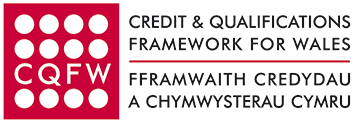| 1. |
Understand specific communication needs and factors affecting them. |
|
| 1.1 | Explain the importance of meeting an individual’s communication needs. | | 1.2 | Explain how own role and practice can impact on communication with an individual who has specific communication needs. | | 1.3 | Analyse features of the environment that may help or hinder communication. | | 1.4 | Analyse reasons why an individual may use a form of communication that is not based on a formal language system. | | 1.5 | Identify a range of communication methods and aids to support individuals to communicate. | | 1.6 | Describe the potential effects on an individual of having unmet communication needs. |
|
| 2. |
Be able to contribute to establishing the nature of specific communication needs of individuals and ways to address them. |
|
| 2.1 | Work in partnership with the individual and others to identify the individual’s specific communication needs. | | 2.2 | Contribute to identifying the communication methods or aids that will best suit the individual. | | 2.3 | Explain how and when to access information and support about identifying and addressing specific communication needs. |
|
| 3. |
Be able to interact with individuals using their preferred communication. |
|
| 3.1 | Prepare the environment to facilitate communication. | | 3.2 | Use agreed methods of communication to interact with the individual. | | 3.3 | Monitor the individual’s responses during and after the interaction to check the effectiveness of communication. | | 3.4 | Adapt own practice to improve communication with the individual. |
|
| 4. |
Be able to promote communication between individuals and others. |
|
| 4.1 | Support the individual to develop communication methods that will help them to understand others and be understood by them. | | 4.2 | Provide opportunities for the individual to communicate with others. | | 4.3 | Support others to understand and interpret the individual’s communication. | | 4.4 | Support others to be understood by the individual by use of agreed communication methods. |
|
| 5. |
Know how to support the use of communication technology and aids. |
|
| 5.1 | Identify specialist services relating to communication technology and aids. | | 5.2 | Describe types of support that an individual may need in order to use communication technology and aids. | | 5.3 | Explain the importance of ensuring that communication equipment is correctly set up and working properly. |
|
| 6. |
Be able to review an individual’s communication needs and the support provided to address them. |
|
| 6.1 | Collate information about an individual’s communication and the support provided. | | 6.2 | Contribute to evaluating the effectiveness of agreed methods of communication and support provided. | | 6.3 | Work with others to identify ways to support the continued development of communication. |
|
